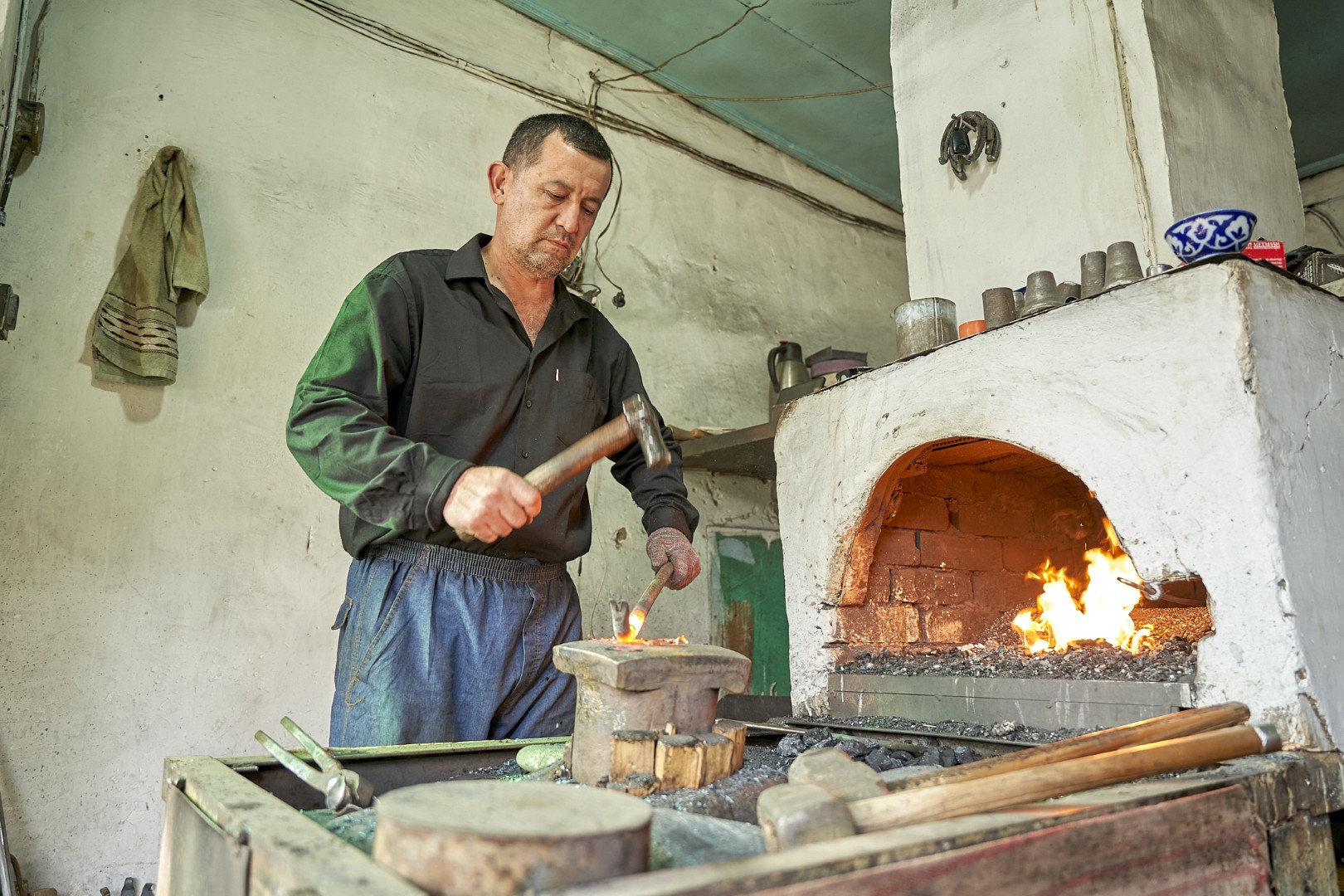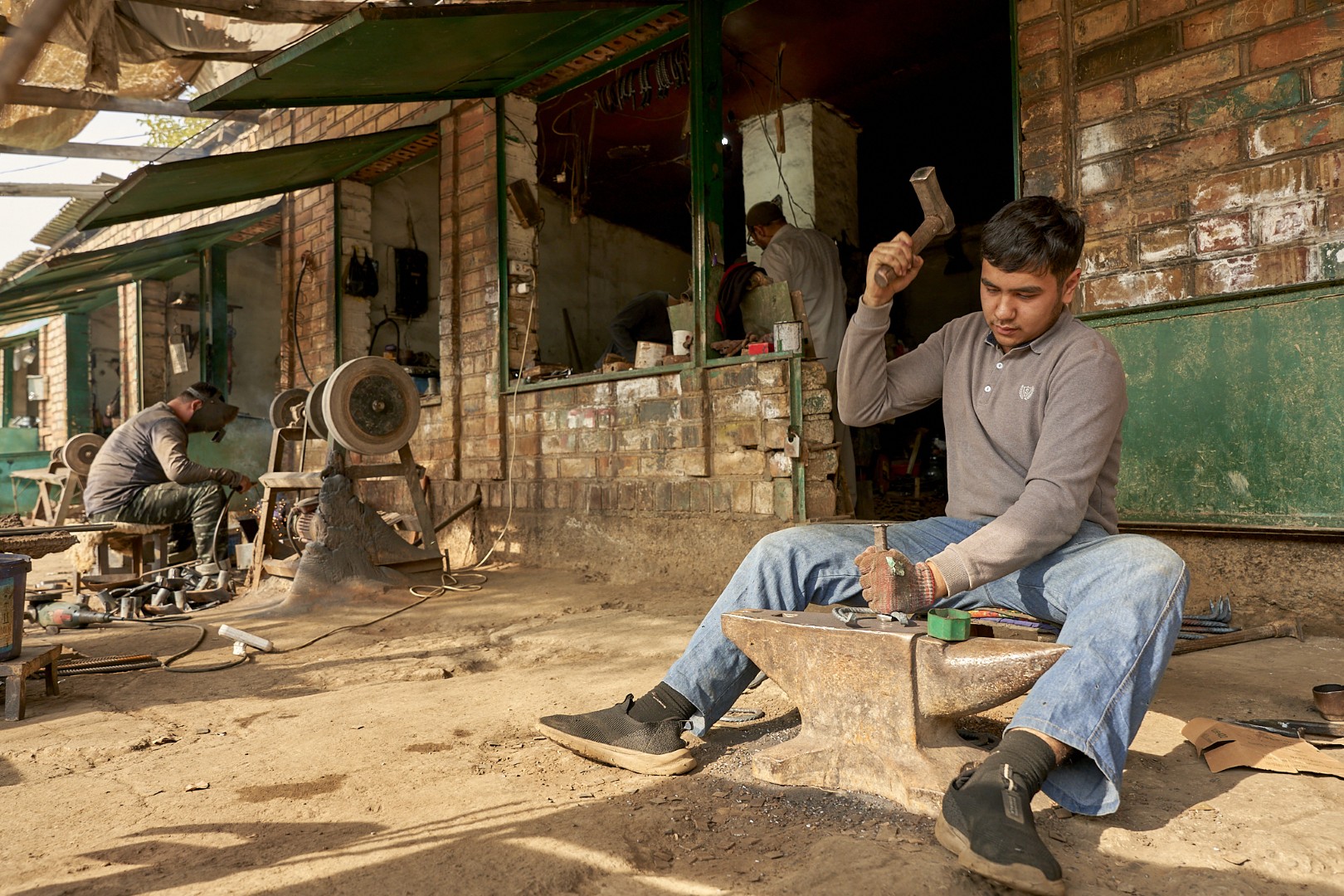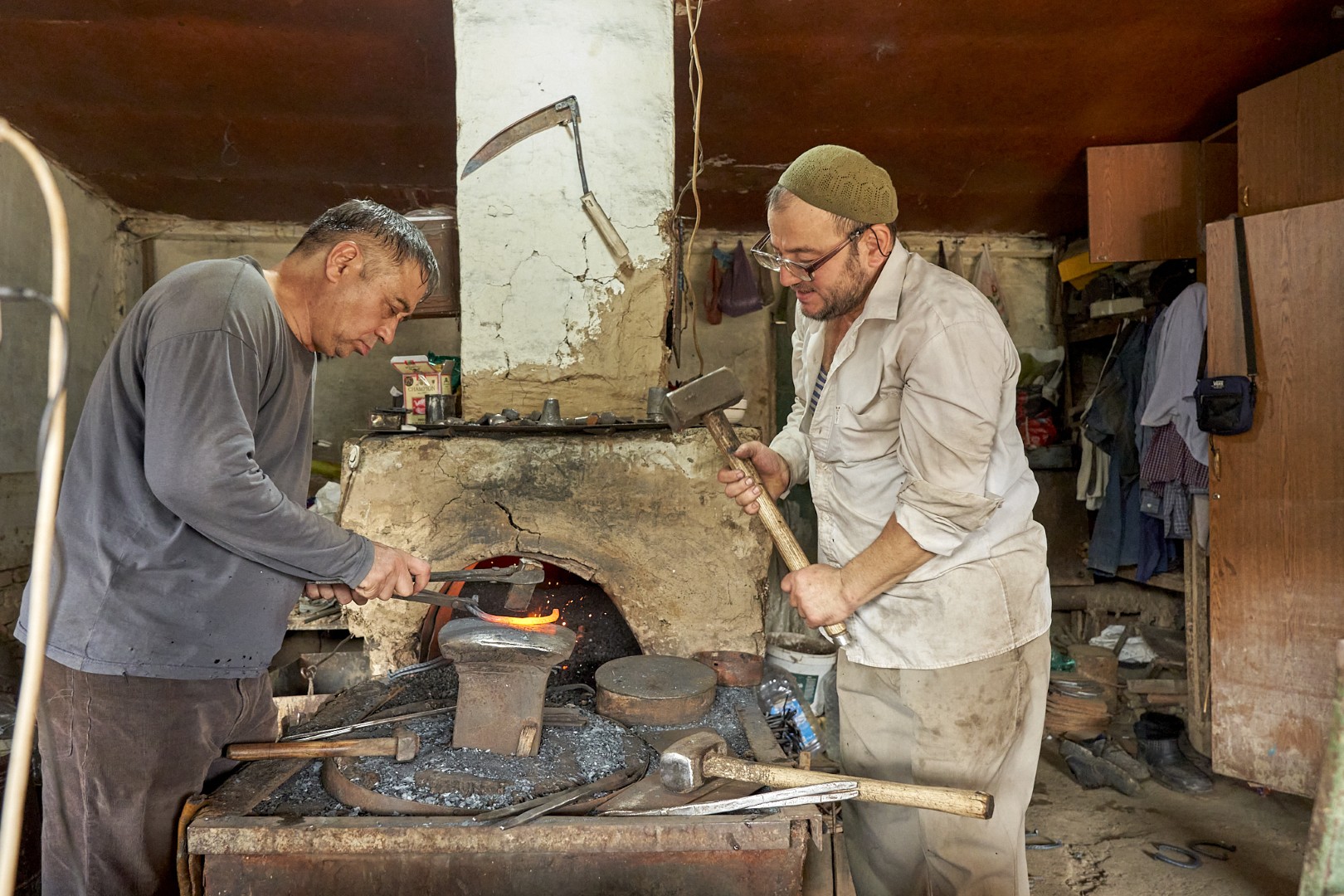

Entrance fee – no fee

10:00 – 16:00

No closing days
Add to My Tour
Blacksmiths’ Row
The blacksmiths’ row is situated on the bank of the Ak-Buura, in the most colourful part of the old bazaar, as it has been for over a thousand years. Every morning there is the ringing of hammers on anvils. Aptitude, dexterity and stamina, multiplied by many years of tradition, are the defining qualities of a real blacksmith.
Every strike has to be made at the right point! After all, the average forging hammer weighs almost three kilograms, and it takes at least a thousand blows to make a quality product.
Osh blacksmiths here make both mass-produced and individual items. They make hoes, ketmens, pliers, axes, scythes, forks, nails, horseshoes, and many other things that are essential for local peasants, and that cannot be found in construction shops. Huge samovars are produced and sold not only to teahouses, but also to townspeople. Only blacksmiths can make the special culinary items needed by local chefs, who use them to make the most delicious samsas in Kyrgyzstan.
The famous Osh knives occupy a special place among the quality products of the blacksmiths. It takes several days to make a beautifully inlaid knife, and an apprentice-turned-master learns to properly sharpen a knife blade over the years. Local blacksmiths always have finished products they are ready to sell, but there are some knives that they keep carefully, refusing to part with them.
In the past, almost every adult man had a knife in a leather sheath on his belt, which was used to carve meat or slaughter sacrificial animals. The handles of such knives were traditionally made of yak horns, decorated with precious and semi-precious stones. The blades were engraved with quotations from the scriptures, set with ethnic ornaments and stamped with the initials of the master.
Blacksmiths are the guardians of the traditions of the old bazaar. They do their work regardless of the times and rulers.

Locations Nearby
-
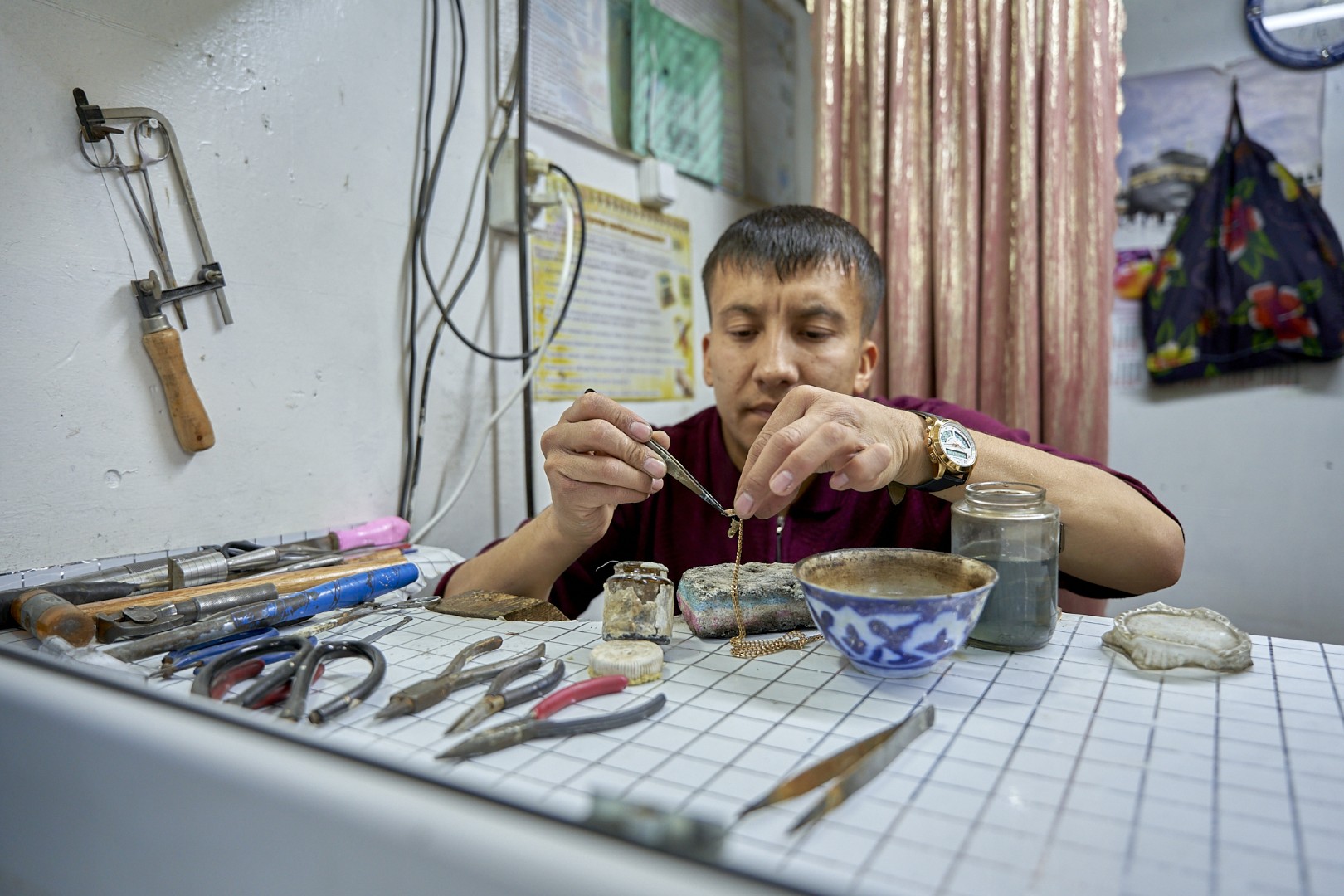
Altyn Bazaar
Start your walk around the old bazaar at one of the oldest passageways on Lenin Street, near the historical Sheyit-Tepe neighborhood. It is not visible…
-
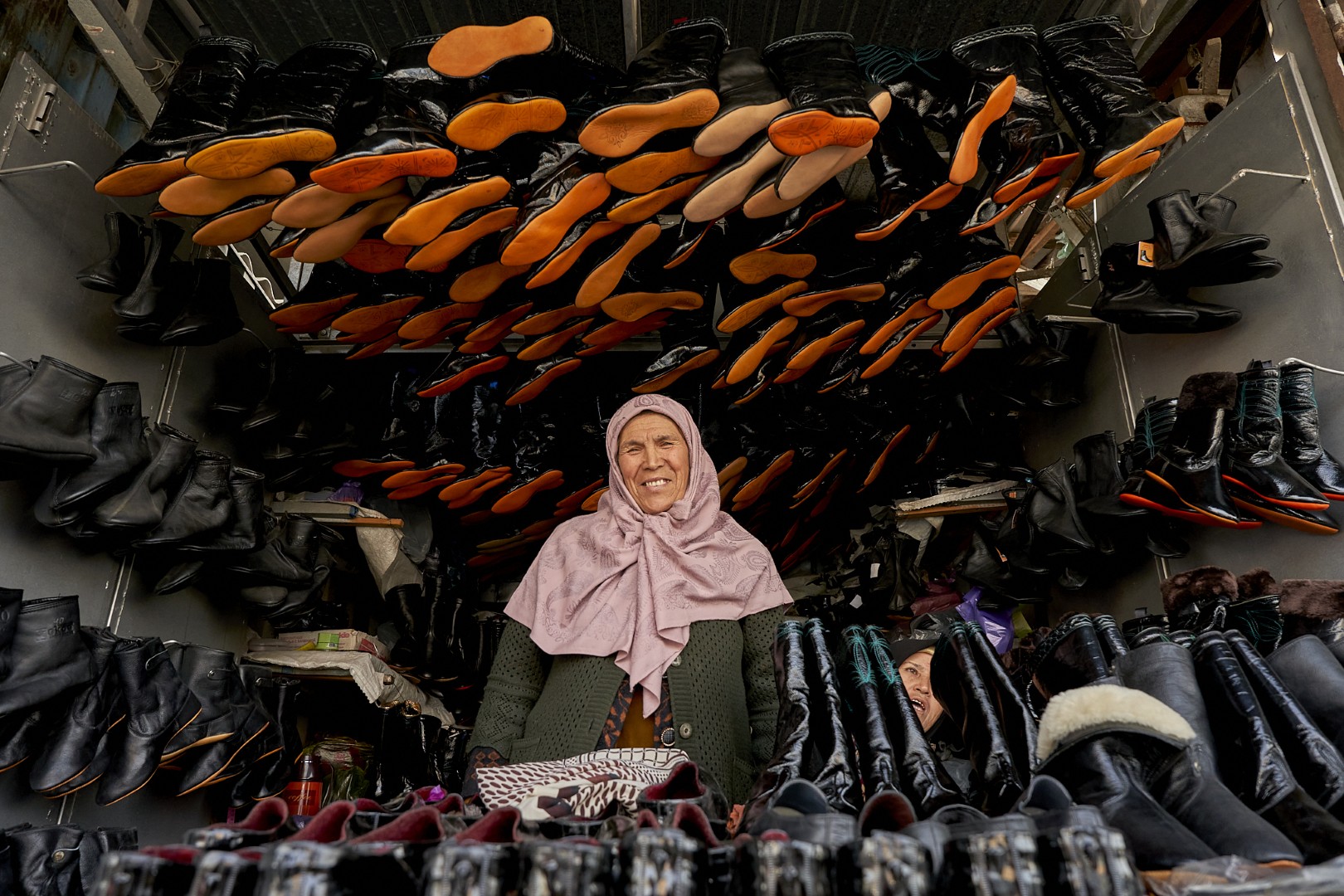
Teshik-Tash
Teshik-Tash is one of the oldest and most colorful passageways to the bazaar, dating back to ancient times. Long ago, it was the most common…
-

Blacksmiths’ Row
The blacksmiths’ row is situated on the bank of the Ak-Buura, in the most colourful part of the old bazaar, as it has been for…
-
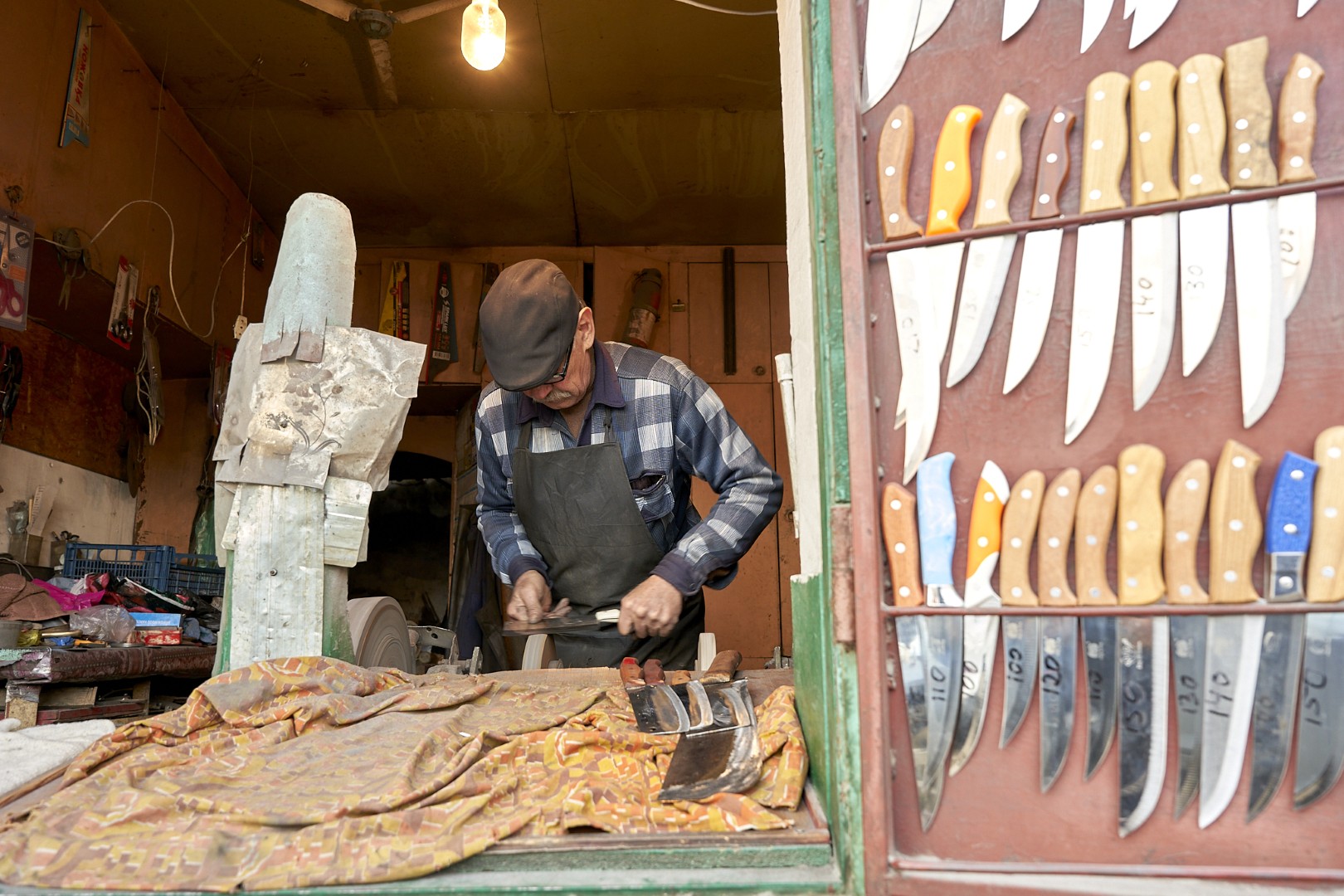
Artisans
The old bazaar is famous for its artisans, who cherish and preserve the secrets of their handicrafts, and whose wares are still in demand among…
Other Locations
-
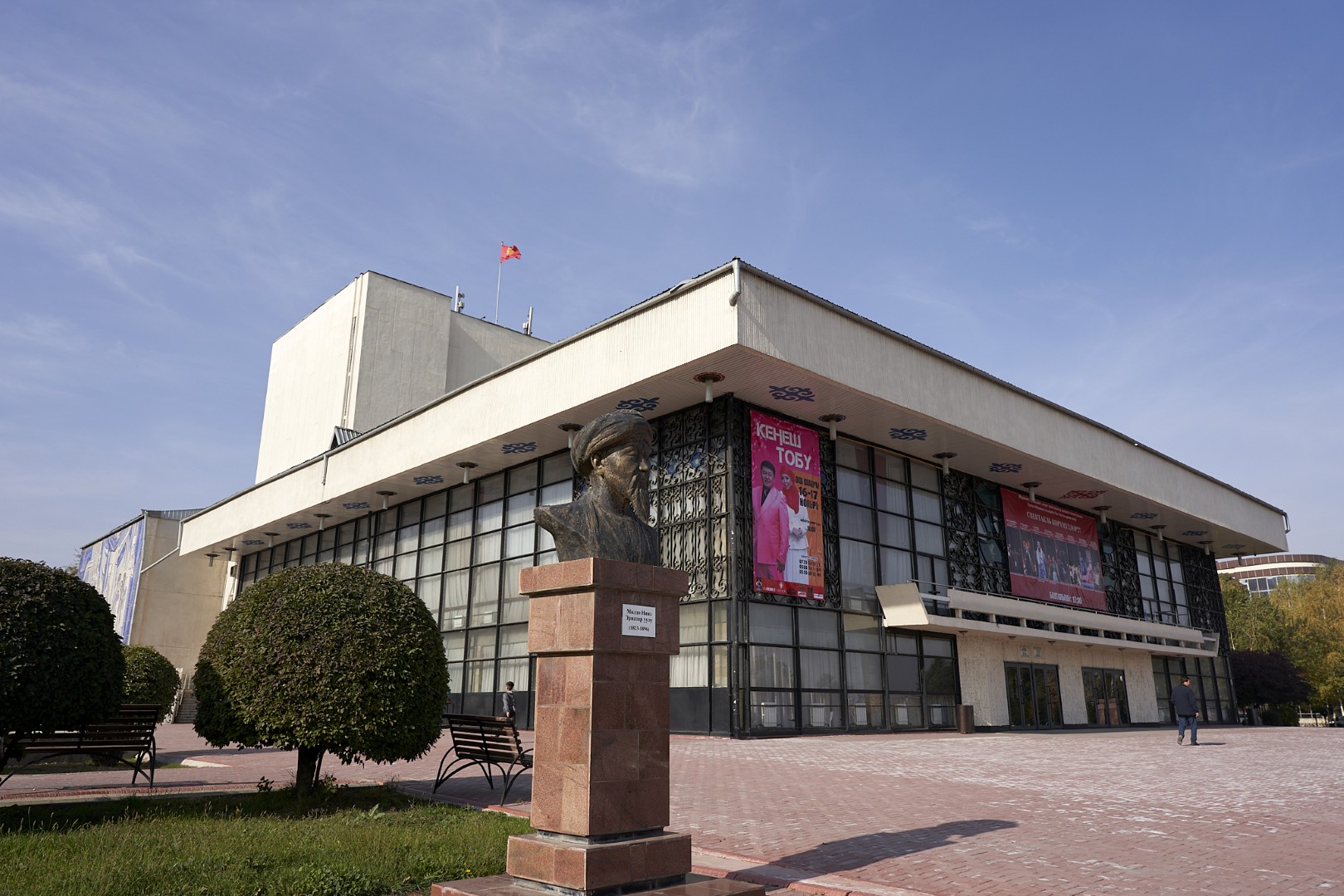
National Drama Theatre
The Osh National Drama Theatre named after Sultan Ibraimov is one of the largest and most famous theatres in Kyrgyzstan. The theatre company was established…
-
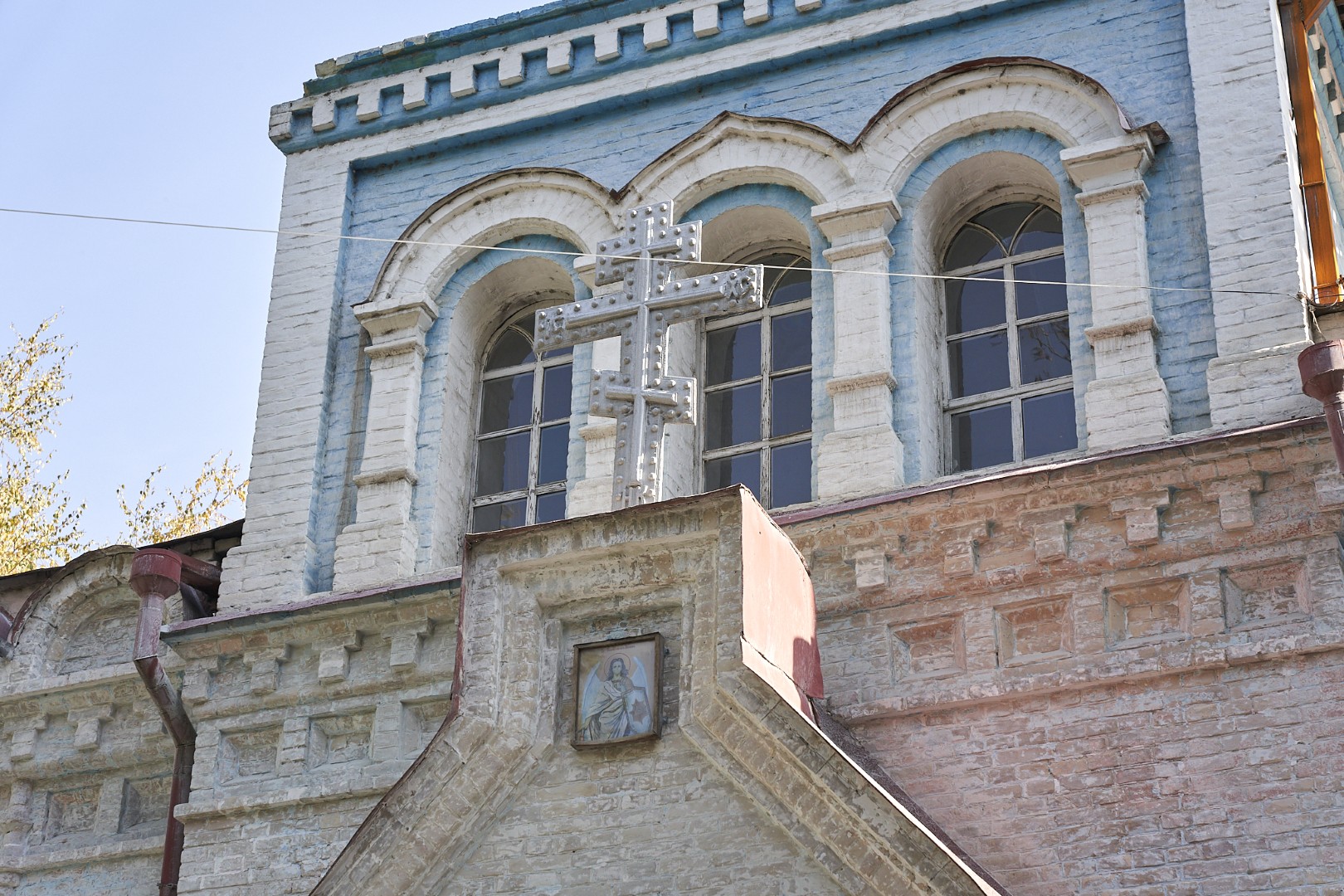
Russian Orthodox Church
St. Michael the Archangel Cathedral is the only remnant of Russian Orthodox architecture in Osh and was the central landmark around which the Slavic community…
-
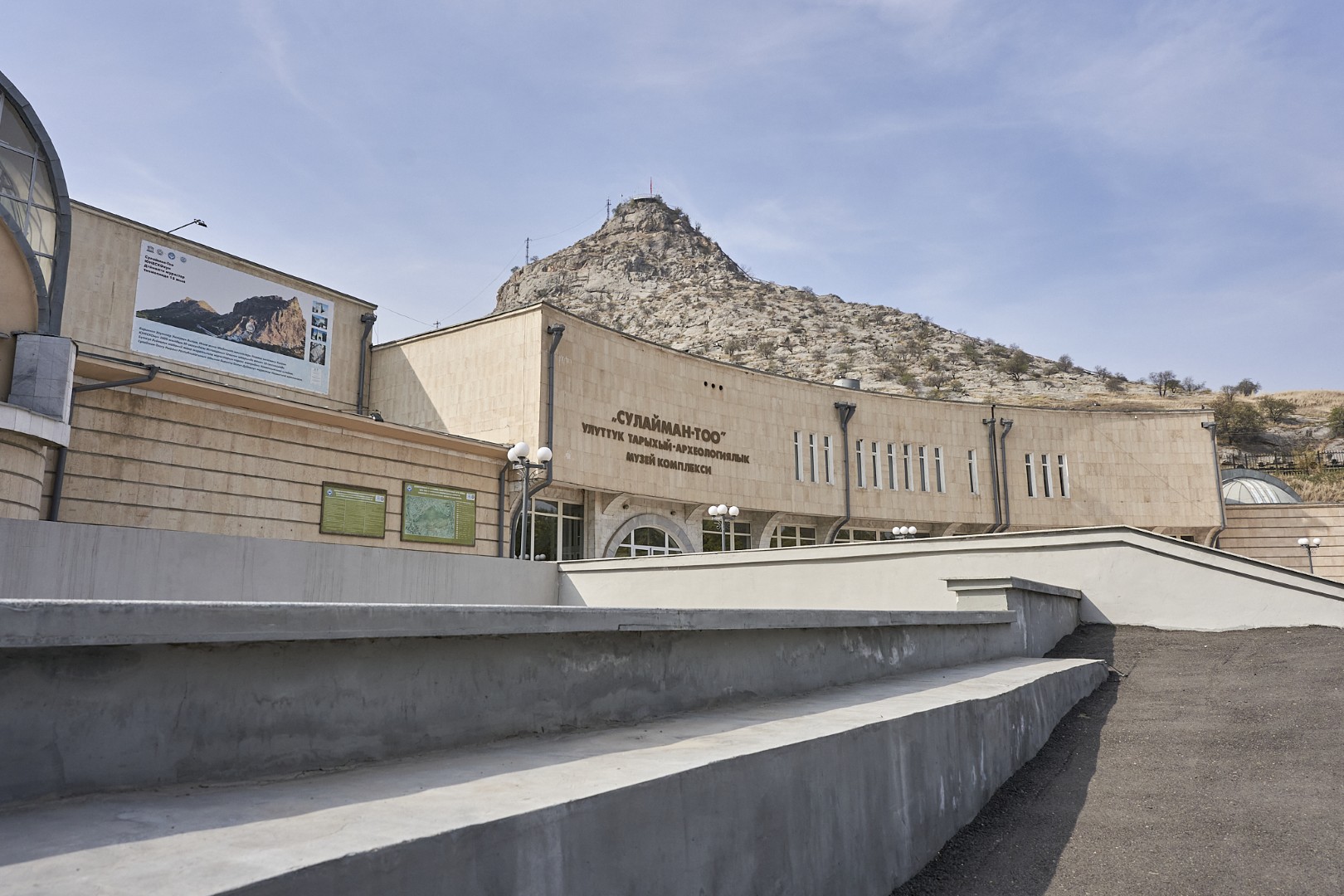
“Zero Milestone”: At the foot of Suleiman Mountain
The square at the foot of Suleiman Mountain’s north face has not always been the open and lively place it is today. Until the 1970s,…
-
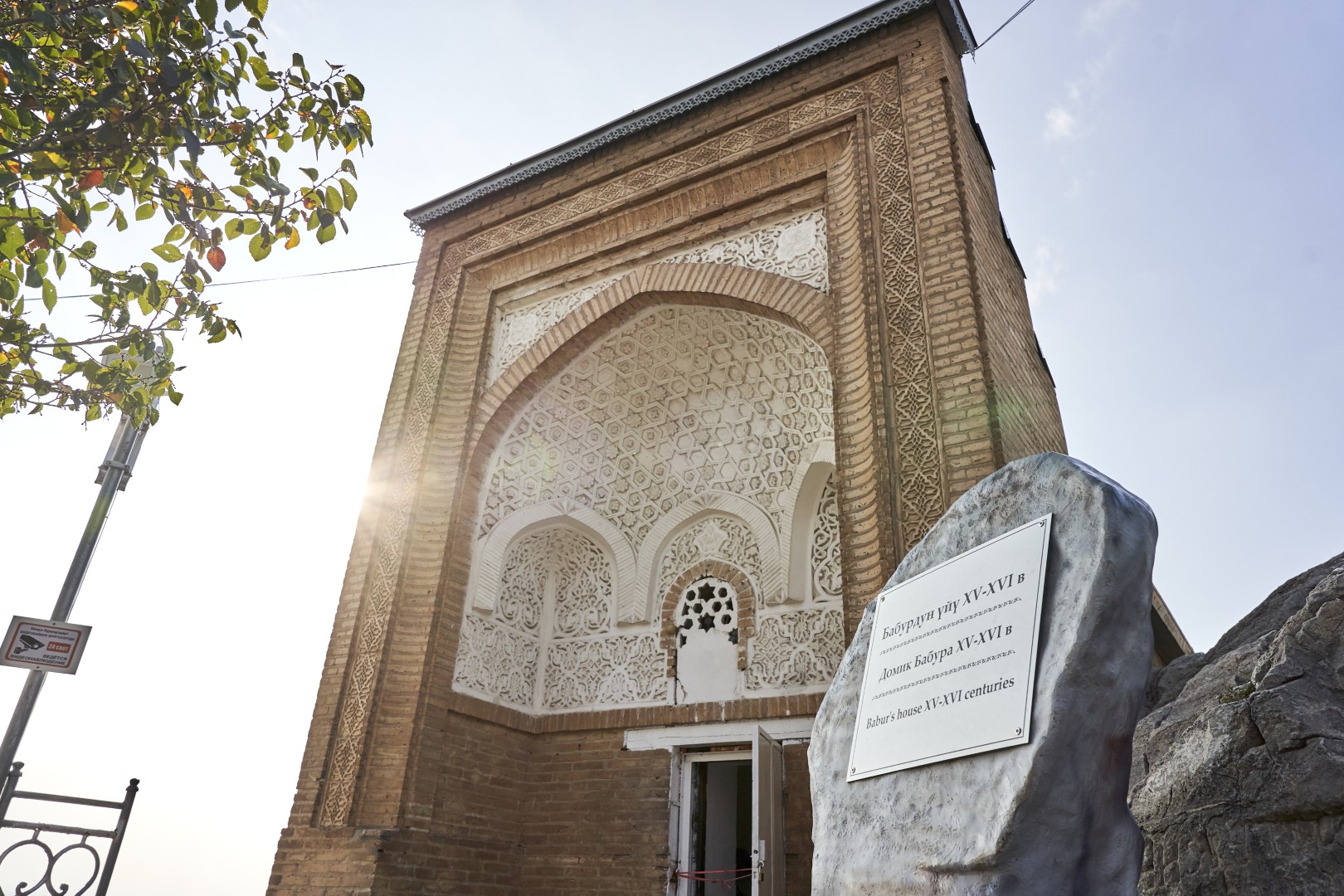
Hujra of Babur, the Founder of the Mughal Empire
The most famous historical monument on Suleiman Mountain is the hujra of Zahīr ud-Dīn Muhammad Babur, the founder of the Mughal Empire in the Hindustan…
